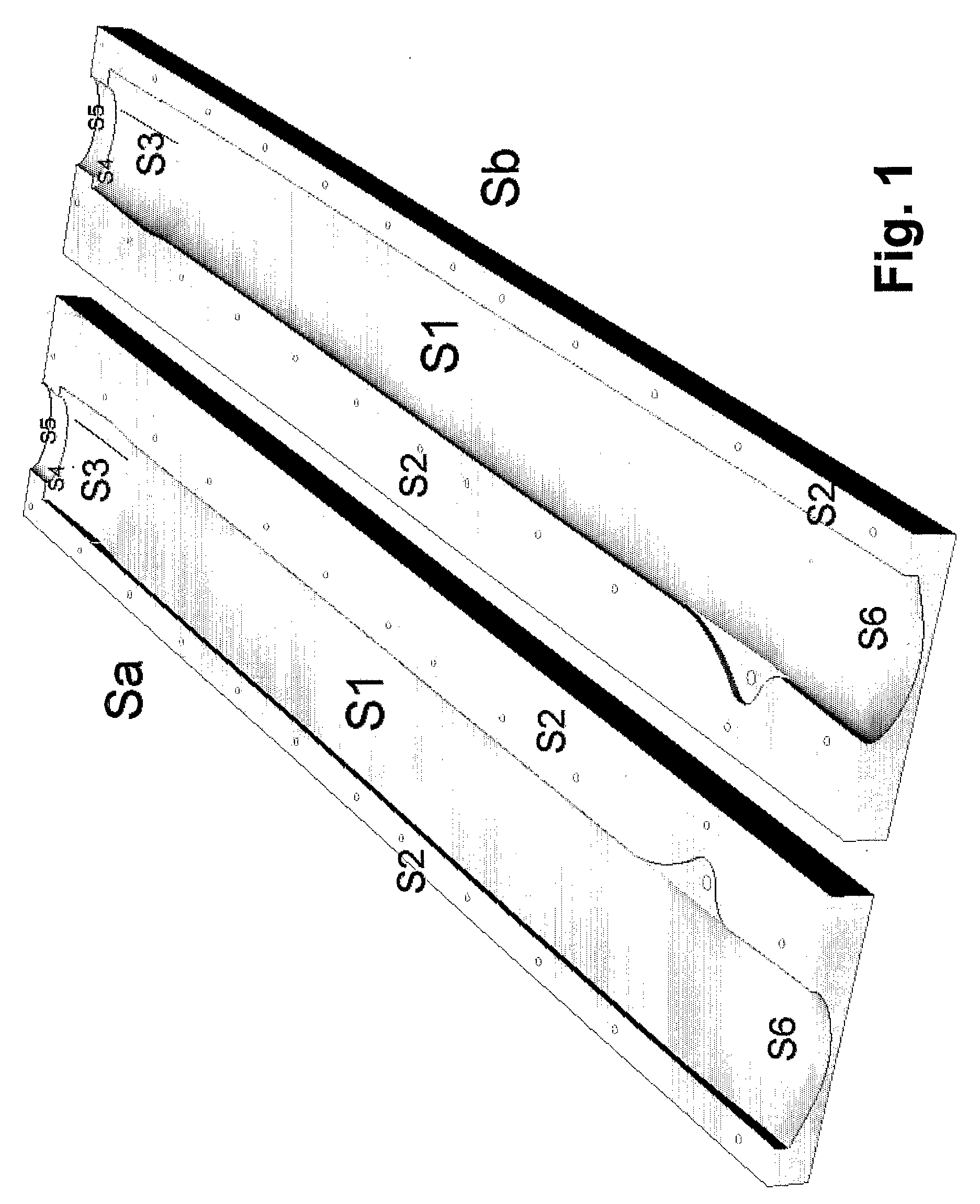Process for Structurally Joining Modular Hollow Columns or Rods Generically Elongated in Shape and the Product Obtained
a technology of modular hollow columns and rods, which is applied in the direction of structural elements, building components, domestic articles, etc., can solve the problems of high cost of autoclaves necessary to obtain optimal pressure and temperature, large and heavy moulds needed to make sailboat masts, and high cost of handling, etc., to increase the stability of walls, easy to transport, easy to and economically transported
- Summary
- Abstract
- Description
- Claims
- Application Information
AI Technical Summary
Benefits of technology
Problems solved by technology
Method used
Image
Examples
Embodiment Construction
[0016]The particular application described herein is suitable for the production of masts for sailboats, but it may be used to produce posts for road lights and for electric energy, for platform supports, for columns and in general for any elongated hollow structure, with any cross section (circular, elliptic, with an aerodynamic profile, etc.) and with any length. The invention makes it possible to carry out and transport this type of structure in separate modules, unlike other processes that require the construction of a single piece. The special feature of the invention lies in that it ensures a more precise quality control on the joins between the different modules compared to traditional methods. Thanks to the joining method proposed, the glueing areas constitute a local reinforcement for the column in its whole, instead of an area of potential structural weakness.
[0017]The new process makes it possible to produce modular elongated hollow structures, in resin reinforced with fi...
PUM
| Property | Measurement | Unit |
|---|---|---|
| pressure | aaaaa | aaaaa |
| length | aaaaa | aaaaa |
| taper angle | aaaaa | aaaaa |
Abstract
Description
Claims
Application Information
 Login to View More
Login to View More - R&D
- Intellectual Property
- Life Sciences
- Materials
- Tech Scout
- Unparalleled Data Quality
- Higher Quality Content
- 60% Fewer Hallucinations
Browse by: Latest US Patents, China's latest patents, Technical Efficacy Thesaurus, Application Domain, Technology Topic, Popular Technical Reports.
© 2025 PatSnap. All rights reserved.Legal|Privacy policy|Modern Slavery Act Transparency Statement|Sitemap|About US| Contact US: help@patsnap.com



